【汚染水】ワシントンポストとブルンバーグ系「Business Week」が「汚染水の漏洩がコントロールされている」などとは「バカげている」と報じている。こうまで書かれては日本政府の信用はがた落ちだ。なぜ外国での報道されようを日本メデイアは正直に伝えないのか。
http://www.businessweek.com/news/2013-10-06/tepco-s-claim-radiation-leaks-confined-to-coast-called-silly
<「Tepco’s Claim Radiation Leaks Confined to Coast Called ‘Silly’」:ジョナサン・タイロン記者(放射能漏れは海岸で封じ込めたという東電主張は「バカげて」いる)
Sillyという言葉には「愚か、愚劣、バカげた」という意味もあり、侮蔑と不信の表現です。
Japan’s government has supported the utility’s statement that the irradiated groundwater flowing into the Pacific Ocean at a rate of some 400 tons a day remains in an area of 0.3 square kilometers (0.12 square miles) within the bay fronting the atomic station.
(放射能に汚染された地下水400トン/日が太平洋に流れ込んでいるが、日本政府は原発の前にある0.3平方キロの湾内に留まっているという東電の発表を支持した。)
“These statements like a 0.3 square-kilometer zone are silly,” Woods Hole Oceanographic Institution senior scientist Ken Buesseler said in an interview. “It’s not true to the science,” said Buesseler, who was on a Japanese research vessel 1 kilometer (0.6 miles) off Fukushima from Sept. 8 to Sept. 14.(「0.3平方キロの領域などという声明はバカげている」、ウッズホール海洋学研究所上級研究員ケン・ビュッセラーはインタビューでこう述べた。「これは真の科学ではない」。彼は9月8日から14日まで、福島原発の沖合1キロの地点で日本の研究船に乗っていた。)
International Rules=国際ルール
Each tank contains about 10 terabequerels, or 270 curies, of strontium-90, a radioactive element linked to leukemia that can enter the food chain by depositing into the bones of fish, Buesseler said. That is 100 times the amount of radioactivity dumped by Russia into the Sea of Japan in a 1993 incident that prompted international rules against ocean disposal.(福島原発にあるタンク1基が10テラベクレルつまり270キュリーのストロンチウム90を含んでいる。白血病を起こす放射性元素で、魚の骨に沈着し食物連鎖に侵入する。この量は1993年にロシアが海洋投棄した放射性物質量の100倍に達する。あの事件以来、海洋投棄に関する国際規則が制定された。)
“If only 10 of those tanks leaked it would equal all the strontium released in 2011” after the earthquake and tsunami, Buesseler said. “Once strontium gets into fish, it stays in them for months and years and it’s going to be an additional reason why they won’t be able to open up their fisheries.”(「(すでに1000基以上ある)タンクのたった10基が漏れれば、2011年に地震と津波により漏れたストロンチウム(Sr)量に等しくなる」とビュッセラーはいう。「一度Srが魚に取り込まれれば、何ヶ月も何年もそこに留まるから、福島沖の漁業が再開できない、追加理由になるだろう。)
“One hundred kilometers away I can measure isotopes of cesium that are coming from the reactor” in Fukushima, Buesseler said. “They’re not at dangerous levels. The scientific question is are they at levels high enough to accumulate in the food chain and a cause for some of the fish to be above the legal limit.”(「福島第一原発から100キロ離れた地点でも、セシウム同位体を測定できる。値は危険なレベルではない。科学的な問題は、それらが食物連鎖中で濃縮され、ある種の魚において法的リミットを超える原因になるほどに、高濃度かどうかにある。」
“The credibility problem is as great as the engineering solution,” said Buesseler, who has traveled to Japan multiple times to assess Fukushima’s impact on the ocean ecosystems. “There’s a lack of trust that they keep reinforcing by saying things like ‘beyond this 0.3 kilometers zone there’s no release.’”(「信用性の問題が、技術的解決と同じ程度に大問題だ」と、日本各地を何度も、福島事故が海洋生態系に与える衝撃を調査するために廻った彼はいう。「<この0.3キロの他には放射能漏れはない>というようなことを、言い続けることに信頼性はない。)
For Japan to reduce the risk of Fukushima’s radiation entering the food chain, it may consider pumping effluent below 4,000 meters, said Stony Brook University marine biologist Nicholas Fisher in an interview. Before the practice was banned, the International Atomic Energy Agency developed best-practice guidelines for disposing of waste in deep water.(日本にとって福島の放射能が食物連鎖に入るリスクを減らすには、(排水を深海)4000m以下に注入することだ、とストニー・ブルックス大学の海洋生物学者ニコラス・フィッシャーはインタビューで述べた。海洋排出が禁止される前に、IAEAは「深海への廃棄物投棄に関するベストプラクティス・ガイドライン」をまとめている。)
The International Maritime Organization has prohibited ocean dumping of radioactive material since 1996 after Russia pumped 900 tons of water with a reported 2.18 curies of radiation into the Sea of Japan three years earlier.(国際海洋機構=IMOはロシアが2.18キュリーの放射能を含む900トンの汚染水を日本海に投棄したことが判明した3年後、1996年に放射性物質の海洋投棄を禁止した。)>(以下略)
WPは<「Fukushima plant reports another contaminated water leak after overfilling tank with no gauge」水位計のないタンクらからまたも汚染水漏れ>
と報じている。これはAP配信の転載。
http://articles.washingtonpost.com/2013-10-03/world/42684965_1_storage-tank-masayuki-ono-massive-earthquake-and-tsunami
汚染水のタンクに水位計がないなんて、普通のアメリカ人なら見出しを見ただけで、「なんじゃこれは?!」と言いますね。
普通の家のガレージは道具置き場とか、(ビル・ゲーツやスティーブ・ジョブズのように)作業場・仕事場になっていて、車は外に置いている家が多い。
大工道具、左官道具、ジャッキにテスターやチップ製造器、配管工具まで持っていて、家の修理や増築まで自分でやる人もいる。
記事もさすがにあきれたと見えて。辛辣です。
<TOKYO ― Another day, another radioactive-water spill. The operator of the crippled Fukushima Dai-ichi nuclear plant says at least 430 liters (110 gallons) spilled when workers overfilled a storage tank without a gauge that could have warned them of the danger.(来る日も来る日も、汚染水漏れ。破損した福島第一の監督は最低430リットルの汚染水が漏れたと述べた。作業員が水位計のないタンクに汚染水を入れすぎたのだそうだ。タンクには満水の危険をを警告するはずの水位計がなかった。)
The amount is tiny compared to the untold thousands of tons of radioactive water that have leaked, much of it into the Pacific Ocean, since a massive earthquake and tsunami wrecked the plant and sent it into meltdown in 2011. But the error is one of many the operator has committed as it struggles to manage a seemingly endless, tainted flow.(漏れた量はこれまでに太平洋に漏れた、未発表の数千トンにおよぶ放射能汚染水に比べれば、微々たるものだ。だが、このミスは、原発の作業員たちが見たところ、際限もない汚染水流出を制御しようとする闘いにおいて犯した、多くのミスのひとつにすぎない。)
Plant operator Tokyo Electric Power Co. said Thursday workers detected the water spilling from the top of one large tank when they were patrolling the site the night before. The tank is one of about 1,000 erected on the grounds around the plant to hold water used to cool the melted nuclear fuel in the broken reactors.(TEPCO=東電発表によれば、構内巡視中に巨大タンク頂上から水漏れしているのを発見したという。このタンクは原発付近の地上に設置された約1000基のタンクのひとつで、破損した原子炉の溶けた原子燃料を冷却するのに使用した水を溜めておくためのものである。)
というわけでこのBWとWPの記事2本を読んだ読者には、
1)福島沖100mの海水がセシウム汚染とストロンチウム汚染を受けており、食物連鎖で魚に濃縮される恐れがあること、
2)福島の措置は、IAEAの規制に反している恐れがあること。(これは17日からIAEAの監査が入るはず)
3)東電の処理技術が恐ろしく原始的で、危険物タンクに水位計がないなど、「シリー(愚か)」と呼ばれる状況にあること、
4)構内に1,000基の巨大タンクがあり、1基でも破損して水漏れを起こしたら、とんでもない惨事が生じること、
5)地盤崩壊やタンクのドミノ崩壊や地震・津波が発生した場合の危険性は報じられていないが、海外の科学者はとっくにその危険性に気づいているだろうこと、
などがすぐわかります。
さらに、配電盤のスイッチミスによる原子炉冷却ポンプの停止、さらなるトリチウム汚染水の漏洩など、これでもかこれでもかとミスが続いている。
http://www.zaikei.co.jp/article/20131008/155680.html
この「財経新聞」というのはどういう新聞が知らないが、海外メディアの反応も忠実に伝えている。どうして日本の大手メディアはこれらを報じないのだろうか?
恐らく報じないことで、「ないこと」にしたいのであろう。「ダチョウの平和」だ。
http://www.businessweek.com/news/2013-10-06/tepco-s-claim-radiation-leaks-confined-to-coast-called-silly
<「Tepco’s Claim Radiation Leaks Confined to Coast Called ‘Silly’」:ジョナサン・タイロン記者(放射能漏れは海岸で封じ込めたという東電主張は「バカげて」いる)
Sillyという言葉には「愚か、愚劣、バカげた」という意味もあり、侮蔑と不信の表現です。
Japan’s government has supported the utility’s statement that the irradiated groundwater flowing into the Pacific Ocean at a rate of some 400 tons a day remains in an area of 0.3 square kilometers (0.12 square miles) within the bay fronting the atomic station.
(放射能に汚染された地下水400トン/日が太平洋に流れ込んでいるが、日本政府は原発の前にある0.3平方キロの湾内に留まっているという東電の発表を支持した。)
“These statements like a 0.3 square-kilometer zone are silly,” Woods Hole Oceanographic Institution senior scientist Ken Buesseler said in an interview. “It’s not true to the science,” said Buesseler, who was on a Japanese research vessel 1 kilometer (0.6 miles) off Fukushima from Sept. 8 to Sept. 14.(「0.3平方キロの領域などという声明はバカげている」、ウッズホール海洋学研究所上級研究員ケン・ビュッセラーはインタビューでこう述べた。「これは真の科学ではない」。彼は9月8日から14日まで、福島原発の沖合1キロの地点で日本の研究船に乗っていた。)
International Rules=国際ルール
Each tank contains about 10 terabequerels, or 270 curies, of strontium-90, a radioactive element linked to leukemia that can enter the food chain by depositing into the bones of fish, Buesseler said. That is 100 times the amount of radioactivity dumped by Russia into the Sea of Japan in a 1993 incident that prompted international rules against ocean disposal.(福島原発にあるタンク1基が10テラベクレルつまり270キュリーのストロンチウム90を含んでいる。白血病を起こす放射性元素で、魚の骨に沈着し食物連鎖に侵入する。この量は1993年にロシアが海洋投棄した放射性物質量の100倍に達する。あの事件以来、海洋投棄に関する国際規則が制定された。)
“If only 10 of those tanks leaked it would equal all the strontium released in 2011” after the earthquake and tsunami, Buesseler said. “Once strontium gets into fish, it stays in them for months and years and it’s going to be an additional reason why they won’t be able to open up their fisheries.”(「(すでに1000基以上ある)タンクのたった10基が漏れれば、2011年に地震と津波により漏れたストロンチウム(Sr)量に等しくなる」とビュッセラーはいう。「一度Srが魚に取り込まれれば、何ヶ月も何年もそこに留まるから、福島沖の漁業が再開できない、追加理由になるだろう。)
“One hundred kilometers away I can measure isotopes of cesium that are coming from the reactor” in Fukushima, Buesseler said. “They’re not at dangerous levels. The scientific question is are they at levels high enough to accumulate in the food chain and a cause for some of the fish to be above the legal limit.”(「福島第一原発から100キロ離れた地点でも、セシウム同位体を測定できる。値は危険なレベルではない。科学的な問題は、それらが食物連鎖中で濃縮され、ある種の魚において法的リミットを超える原因になるほどに、高濃度かどうかにある。」
“The credibility problem is as great as the engineering solution,” said Buesseler, who has traveled to Japan multiple times to assess Fukushima’s impact on the ocean ecosystems. “There’s a lack of trust that they keep reinforcing by saying things like ‘beyond this 0.3 kilometers zone there’s no release.’”(「信用性の問題が、技術的解決と同じ程度に大問題だ」と、日本各地を何度も、福島事故が海洋生態系に与える衝撃を調査するために廻った彼はいう。「<この0.3キロの他には放射能漏れはない>というようなことを、言い続けることに信頼性はない。)
For Japan to reduce the risk of Fukushima’s radiation entering the food chain, it may consider pumping effluent below 4,000 meters, said Stony Brook University marine biologist Nicholas Fisher in an interview. Before the practice was banned, the International Atomic Energy Agency developed best-practice guidelines for disposing of waste in deep water.(日本にとって福島の放射能が食物連鎖に入るリスクを減らすには、(排水を深海)4000m以下に注入することだ、とストニー・ブルックス大学の海洋生物学者ニコラス・フィッシャーはインタビューで述べた。海洋排出が禁止される前に、IAEAは「深海への廃棄物投棄に関するベストプラクティス・ガイドライン」をまとめている。)
The International Maritime Organization has prohibited ocean dumping of radioactive material since 1996 after Russia pumped 900 tons of water with a reported 2.18 curies of radiation into the Sea of Japan three years earlier.(国際海洋機構=IMOはロシアが2.18キュリーの放射能を含む900トンの汚染水を日本海に投棄したことが判明した3年後、1996年に放射性物質の海洋投棄を禁止した。)>(以下略)
WPは<「Fukushima plant reports another contaminated water leak after overfilling tank with no gauge」水位計のないタンクらからまたも汚染水漏れ>
と報じている。これはAP配信の転載。
http://articles.washingtonpost.com/2013-10-03/world/42684965_1_storage-tank-masayuki-ono-massive-earthquake-and-tsunami
汚染水のタンクに水位計がないなんて、普通のアメリカ人なら見出しを見ただけで、「なんじゃこれは?!」と言いますね。
普通の家のガレージは道具置き場とか、(ビル・ゲーツやスティーブ・ジョブズのように)作業場・仕事場になっていて、車は外に置いている家が多い。
大工道具、左官道具、ジャッキにテスターやチップ製造器、配管工具まで持っていて、家の修理や増築まで自分でやる人もいる。
記事もさすがにあきれたと見えて。辛辣です。
<TOKYO ― Another day, another radioactive-water spill. The operator of the crippled Fukushima Dai-ichi nuclear plant says at least 430 liters (110 gallons) spilled when workers overfilled a storage tank without a gauge that could have warned them of the danger.(来る日も来る日も、汚染水漏れ。破損した福島第一の監督は最低430リットルの汚染水が漏れたと述べた。作業員が水位計のないタンクに汚染水を入れすぎたのだそうだ。タンクには満水の危険をを警告するはずの水位計がなかった。)
The amount is tiny compared to the untold thousands of tons of radioactive water that have leaked, much of it into the Pacific Ocean, since a massive earthquake and tsunami wrecked the plant and sent it into meltdown in 2011. But the error is one of many the operator has committed as it struggles to manage a seemingly endless, tainted flow.(漏れた量はこれまでに太平洋に漏れた、未発表の数千トンにおよぶ放射能汚染水に比べれば、微々たるものだ。だが、このミスは、原発の作業員たちが見たところ、際限もない汚染水流出を制御しようとする闘いにおいて犯した、多くのミスのひとつにすぎない。)
Plant operator Tokyo Electric Power Co. said Thursday workers detected the water spilling from the top of one large tank when they were patrolling the site the night before. The tank is one of about 1,000 erected on the grounds around the plant to hold water used to cool the melted nuclear fuel in the broken reactors.(TEPCO=東電発表によれば、構内巡視中に巨大タンク頂上から水漏れしているのを発見したという。このタンクは原発付近の地上に設置された約1000基のタンクのひとつで、破損した原子炉の溶けた原子燃料を冷却するのに使用した水を溜めておくためのものである。)
というわけでこのBWとWPの記事2本を読んだ読者には、
1)福島沖100mの海水がセシウム汚染とストロンチウム汚染を受けており、食物連鎖で魚に濃縮される恐れがあること、
2)福島の措置は、IAEAの規制に反している恐れがあること。(これは17日からIAEAの監査が入るはず)
3)東電の処理技術が恐ろしく原始的で、危険物タンクに水位計がないなど、「シリー(愚か)」と呼ばれる状況にあること、
4)構内に1,000基の巨大タンクがあり、1基でも破損して水漏れを起こしたら、とんでもない惨事が生じること、
5)地盤崩壊やタンクのドミノ崩壊や地震・津波が発生した場合の危険性は報じられていないが、海外の科学者はとっくにその危険性に気づいているだろうこと、
などがすぐわかります。
さらに、配電盤のスイッチミスによる原子炉冷却ポンプの停止、さらなるトリチウム汚染水の漏洩など、これでもかこれでもかとミスが続いている。
http://www.zaikei.co.jp/article/20131008/155680.html
この「財経新聞」というのはどういう新聞が知らないが、海外メディアの反応も忠実に伝えている。どうして日本の大手メディアはこれらを報じないのだろうか?
恐らく報じないことで、「ないこと」にしたいのであろう。「ダチョウの平和」だ。










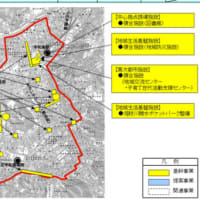
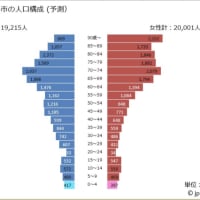
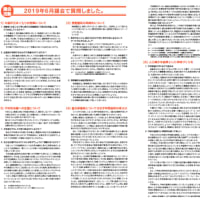
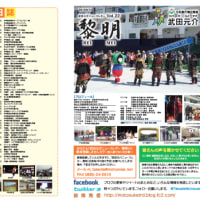
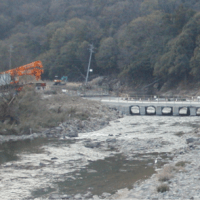
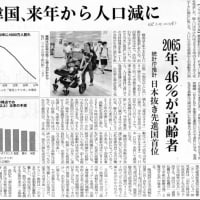
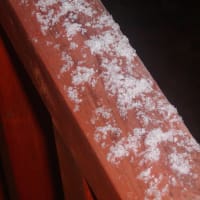
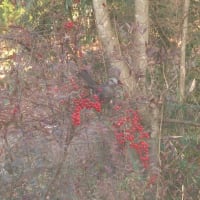
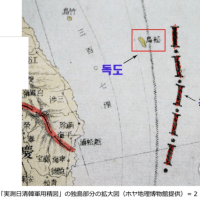
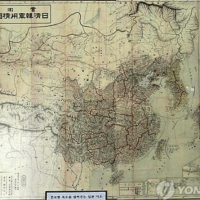
※コメント投稿者のブログIDはブログ作成者のみに通知されます